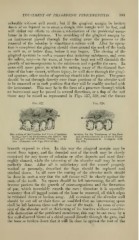Page 971 - My FlipBook
P. 971
TREATMENT OF PHAGEDENIC PERICEMENTITIS. 981
siderably without evil result ; but if the gingival margin be broken
clown or so injured as to cause a slough, this margin will be lost, and
will defeat our efforts to obtain a reformation of the peridental *mem-
brane in its completeness. The stretching of the gingival margin by
an instrument passed through for cutting away the process or the
removal of the calculus is sometimes a serious evil. After the opera-
tion is completed the gingivae should close around the neck of the tooth
as well as, or better than, before it was begun. The closing of the
gingival aperture in such a manner that irritating substances, and even
tiie saliva, may—in the main, at least—be kept out will diminish the
growth of micro-organisms to the minimum and expedite the cure. In
cases still more grave, in which the cutting away of the diseased bor-
ders of the bone cannot, without injury, be well done through the gingi-
val aperture, other modes of operating should take its place. The gums
should be cut through directly over those portions of the alveolar wall
to be removed or in such position that they Mill be readily reached with
the instrument. This may b^ in the form of a puncture through which
an instrument may be passed in several directions, or a flap of the soft
tissue may be raised as represented in Figs. 527, 528, and the tissues
Fro. 527 Fig. 528.
Illustration of the Position and Form of Incision Incision for the Treatment of the Root
through the (ium for exposing the Root of the and Alveobir Process in a Case of Phage-
Tooth and injured Alveolar Process: «, incis- denic Pericementitis. (Compare with
ions. (Compare with Figs. 520 and 521.) Fig. 524.)
beneath exposed to view. In this way the gingival margin may be
saved from injury, and the denuded root of the tooth may be closely
examined for any traces of calculus or other deposits and mo.st thor-
otighly cleaned, while the trimming of the alveolar wall may be more
perfectly done. After all is satisfactory and the wound properly
washed as presently, described the flaps should be replaced and
stitched down. In all cases the cutting of the alveolar walls should
be done in such a way that the soft tissues will lie clo.sely against the
roots of the tooth. No spaces should be left intervening, for all such
become pockets for the growth of micro-organisms and the formation
of pus, which invariably retards the cure; therefore it is especially
necessary that all jagged points of the bone be removed, all thick edges
be trimmed down or broken away. All eversions of the alveolar wall
should be cut off or their form so modified that no intervening space
shall be left between them and the root of the tooth. In cases of ever-
sion of the alveolar wall or thickening of its borders without consider-
able destruction of the peridental membrane, this may be cut away by a
few well-directed blows of a chisel passed directly through the gum, and
the bone so broken down that it will lie close in against the root of the


